
Unstacked Launch
DX Lab Fellows Diary #3
Elisa Lee and Adam Hinshaw.
20th April, 2017 – Launch
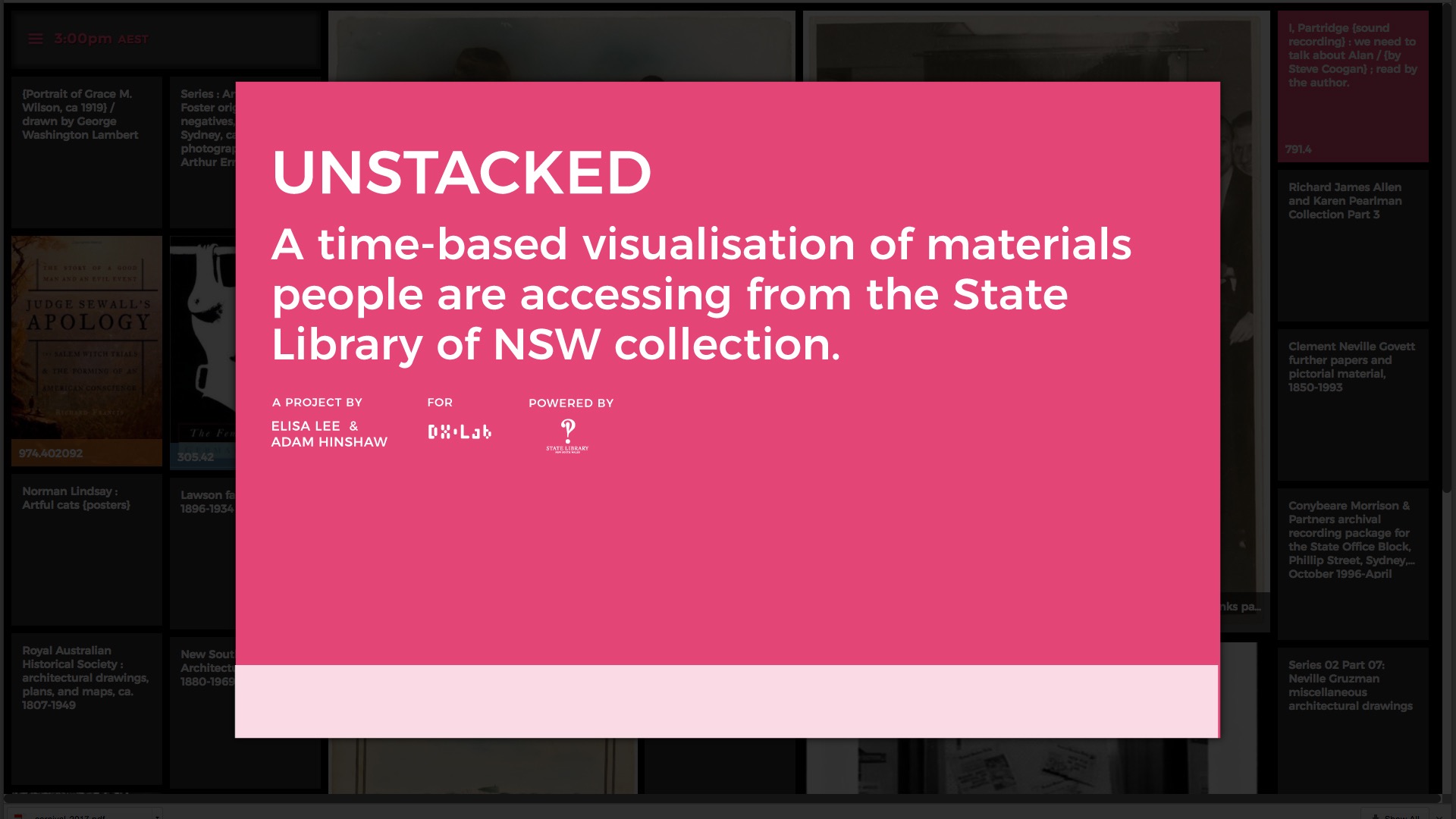
The project has a new name, Unstacked. Why Unstacked? Simply because we are viewing items which are physically or digitally coming from “the stacks”, the underground space where the library holds much of its collection. It is an intriguing labyrinth of shelves, drawers, cupboards and boxes containing a multitude of treasures including books, newspapers, photos, maps, mini-portraits, stamp drawers, architectural drawings and more. It would be such a pleasure to dwell in here for days on end with a curator on hand to reveal the stories behind the items.

Unstacked reflects the pulse of the library’s users. Sometimes there is a flurry of movement as multiple items appear in succession, at other times a contemplative pause. It a living, breathing representation of the library’s readers and their interaction with the collection.
A lot of our practice centres around building frameworks which visualise data being created on the fly and enabling it to tell stories. We’ve always found this compelling as once the framework is setup the content it displays is out of our control and more often than not the results are surprising. Things happen that we could never predict. This project is no exception and it has been a delight to see an endlessly changing “curation” of such fascinating content and to ponder on who curated it and why?
Data Feed
Due to timing issues with the library migrating their backend systems, a decision was made to work with four months of cached access log data from January – April 2016. When possible, the project will be switched over to a real-time feed.
Decisions needed to be made about how we would map cached data to the current date. It could be linked to the same date so that significant events such as Anzac Day would be in line, or it could be mapped to the same day of the week so that Monday’s data fell on a Monday. In the end being faithful to the day of the week took precedence to more accurately represent patterns of use. The data set will be repeated three times a year.
Stats on cached data
January – April, 2016
Total item views = 197,776
Non-published = 68% (134,698), 70% (94,550) with associated images
Published = 32% (63,078). 27% (17,320) with associated images
The busiest day in the data set is Tuesday, 22nd March with 2992 views in total, with the most occurring between 9am and midday.
Visual Design
Our philosophy was always to showcase items with minimal fuss and to let the contents of the collection speak for themselves. Employing an iterative approach through rapid prototyping and testing, design considerations such as types of grids, scale of images, typography, colours, transitions were refined over time. In consultation with the library we have settled on a visualisation which balances communication and aesthetics.

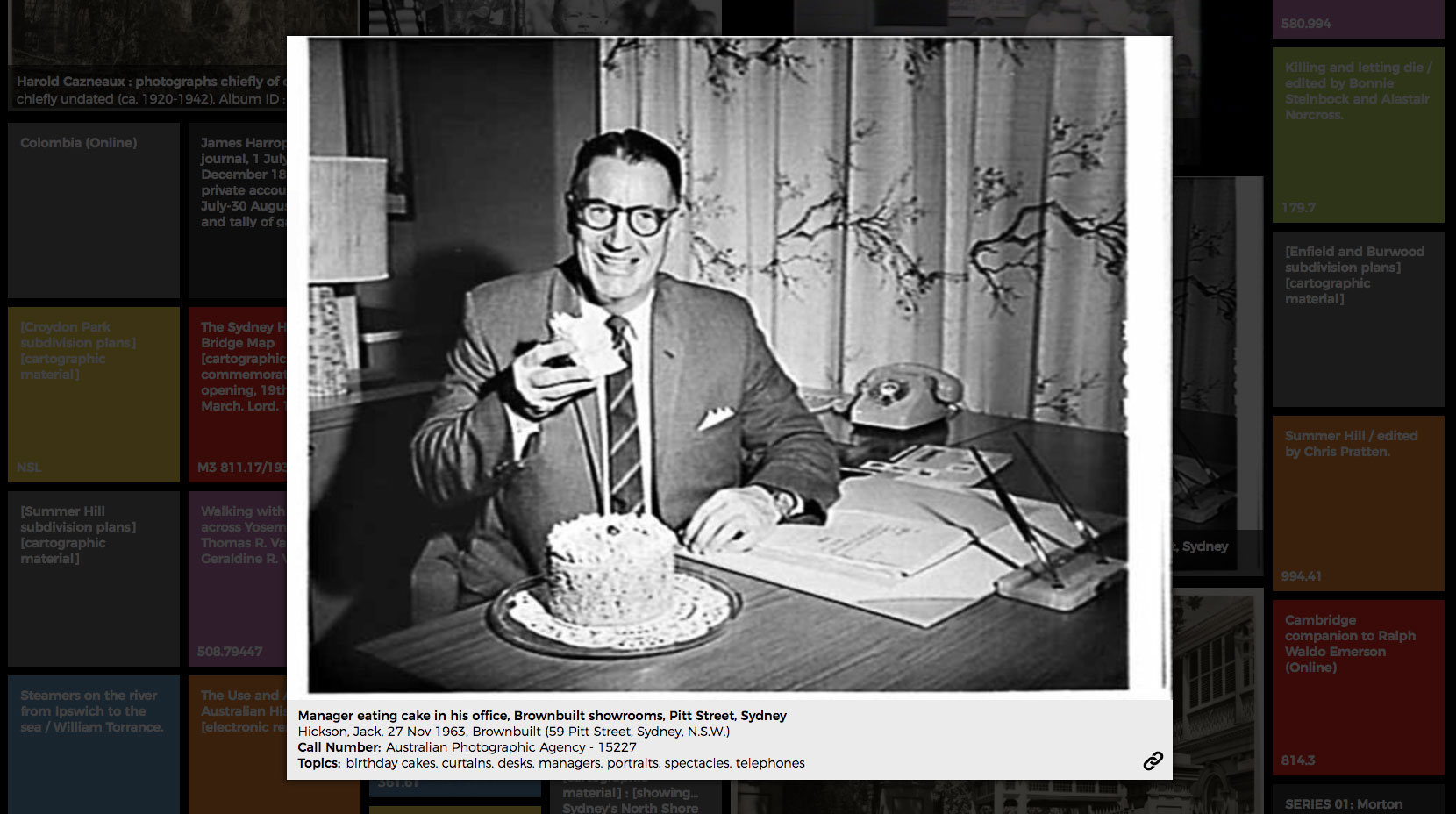
User Interface
As a default state we simply show the project title and the time.
Unstacked runs on the same time as the State Library, Australian Eastern Standard Time. So, if someone from New York looks at Unstacked at 5pm, they will be seeing what is going on in the library at 7am the next day. We are faithful to what is happening in the State Library of NSW right now, no matter where you are or what time it happens to be in your location.
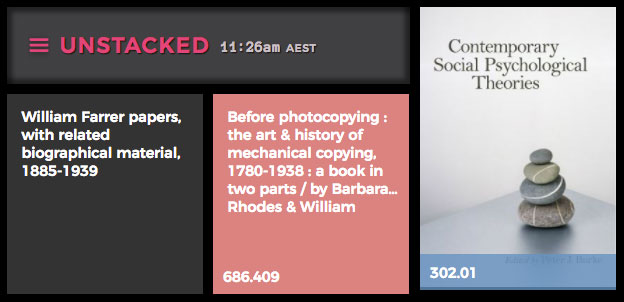
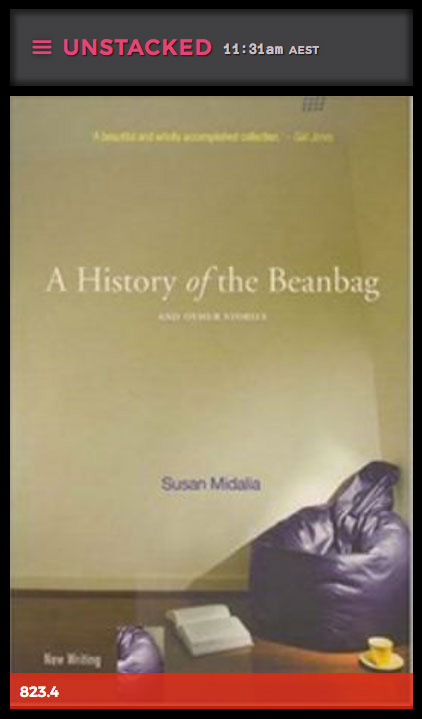
When maximised, the interface provides options to filter the visualisation with results updated live. You can view the entire collection, just Manuscripts & Pictures (the most visually interesting) or just Published materials (mainly books). In addition you can choose to view only items which have image assets attached.
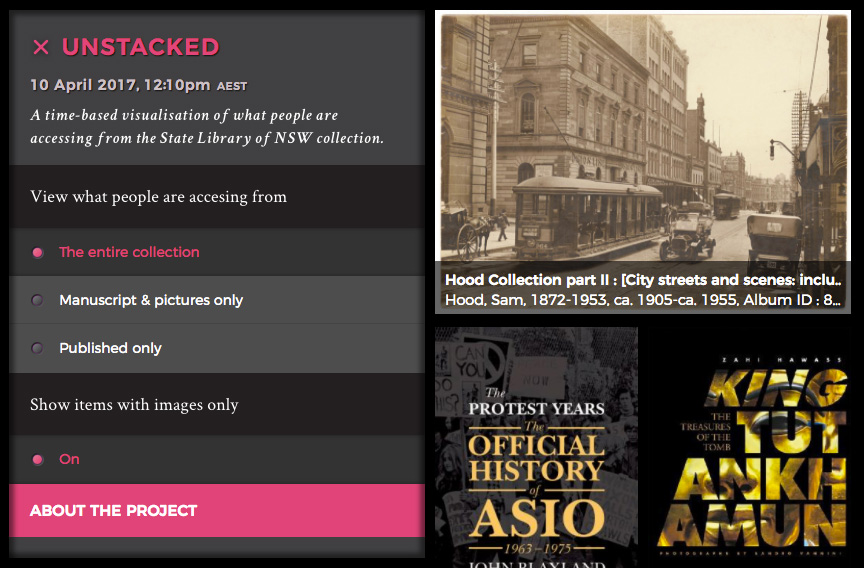
The following screenshots are the same data with different visualisation options applied.
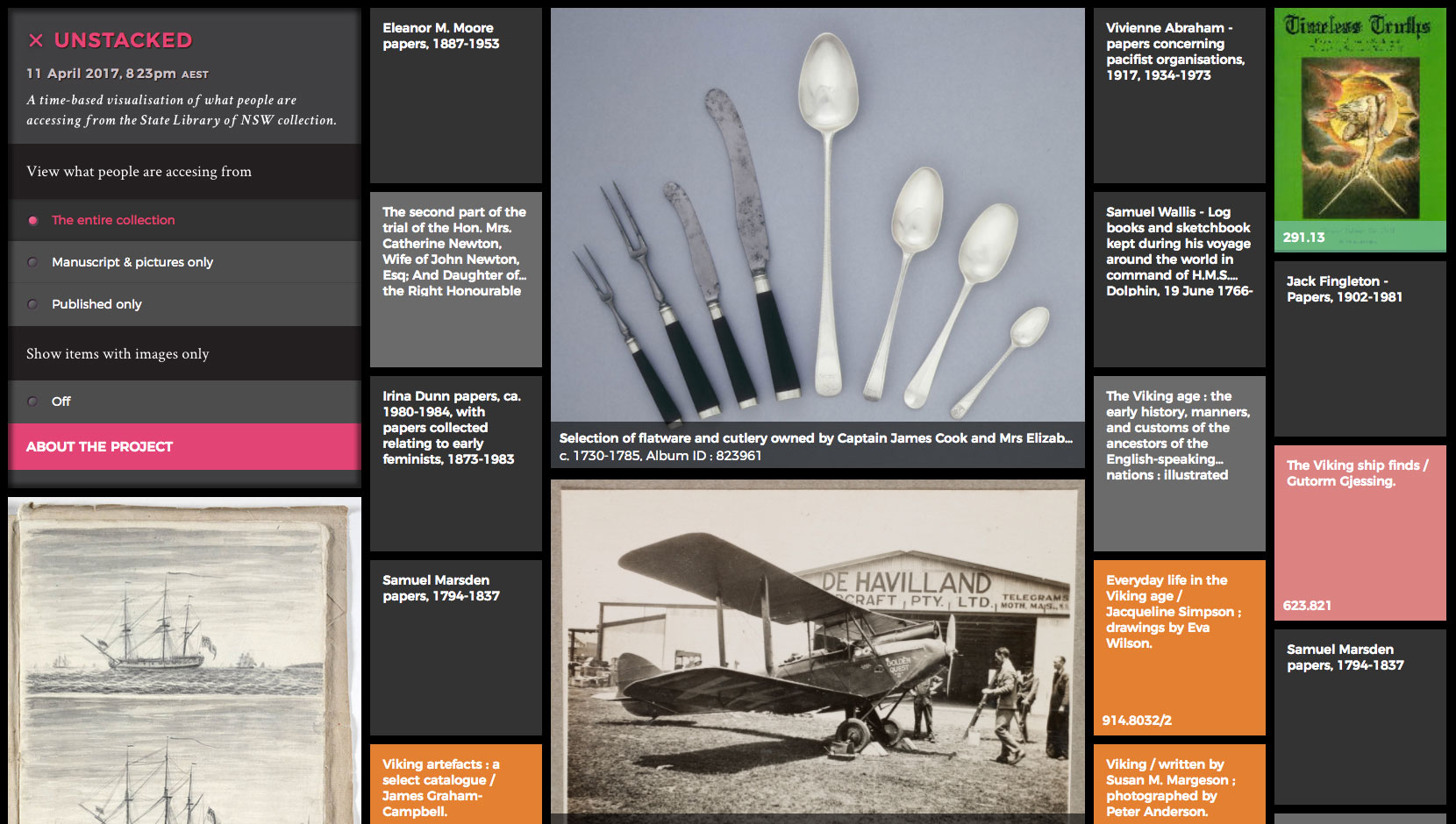
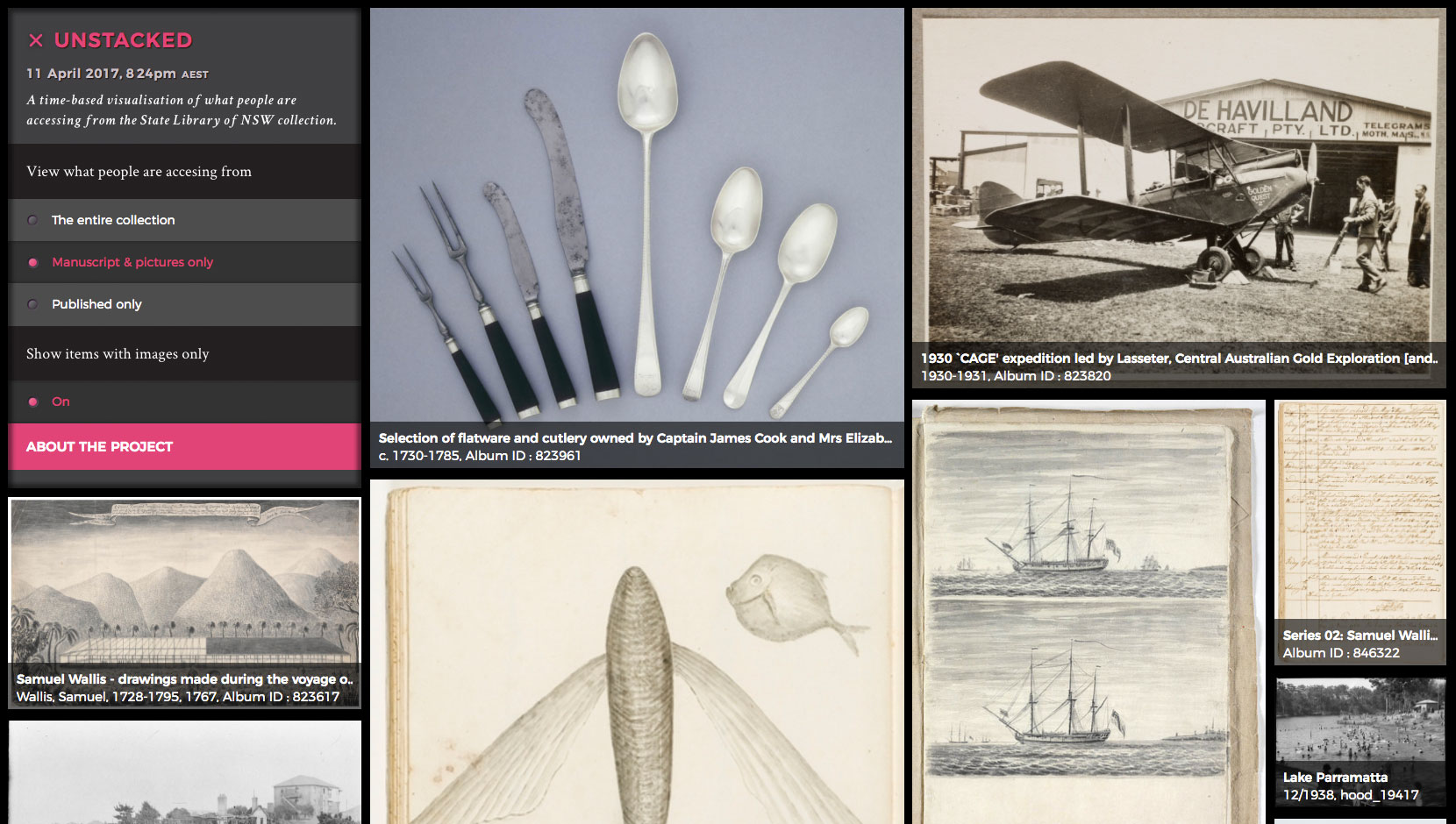
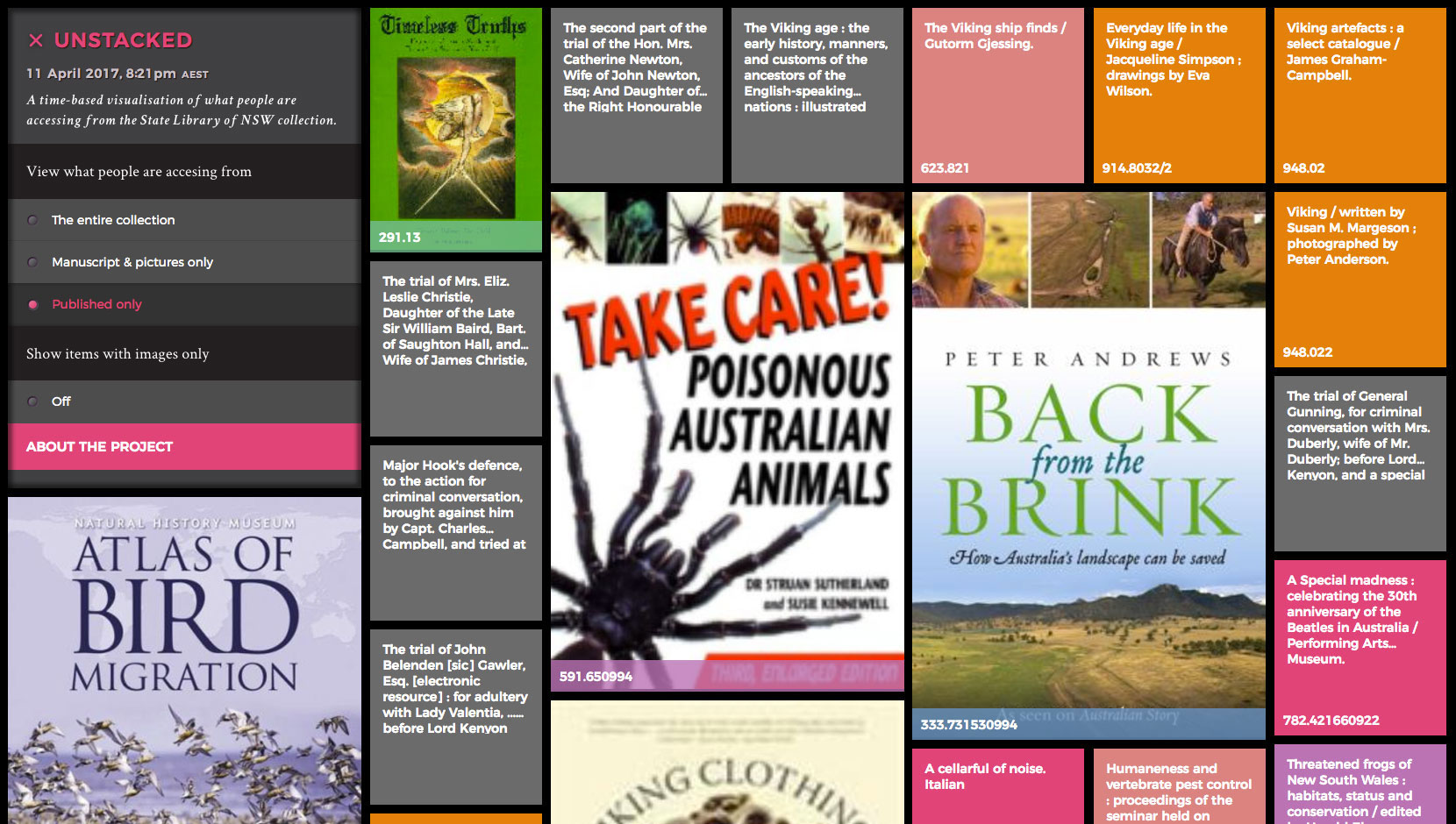
Technology
This project was authored in html5, with heavy use of the javascript programming language. The foundation of our flexible grid system was the very handy Freewall library.
It has been made responsive so that it scales to work on most mobile devices and platforms.
Narratives, results and speculation
We have found that when interaction with the collection is visualised, the results are endlessly compelling. The interests of State Library’s clientele are diverse and surprising, ranging from the mundane to the mysterious, frivolous to serious, botanical to architectural, historical to current. Their interests reflect the breadth and depth of the collection and show it to be a valuable resource to many.
Common library staff responses have been “I wonder who is looking at that”, “I wonder why they are looking at it?” even “That was me looking at those images!” While we cannot deduce with any certainty the motivations behind people’s searches, we can indulge our imaginations through some whimsical speculation. Why are people searching for ear trumpets, soil samples, the rise and fall of teenagers, subdivision plans, kisses in Sydney in the 1950s, houses in Lilyfield in the 1970s, or mosquito management in the Murray region?
The juxtaposition of diverse items being researched can also spur the formation of new narratives, for example what could be the relationship between beanbags, vampires and Shakespeare, or more seriously, war, religion and the neurobiology of criminal behaviour? Or, we may muse on a visualisation and note the pleasing orange and grey palette, and, that the architectural link between Utzon and cottages in Hill End in the 1870s is intriguing.
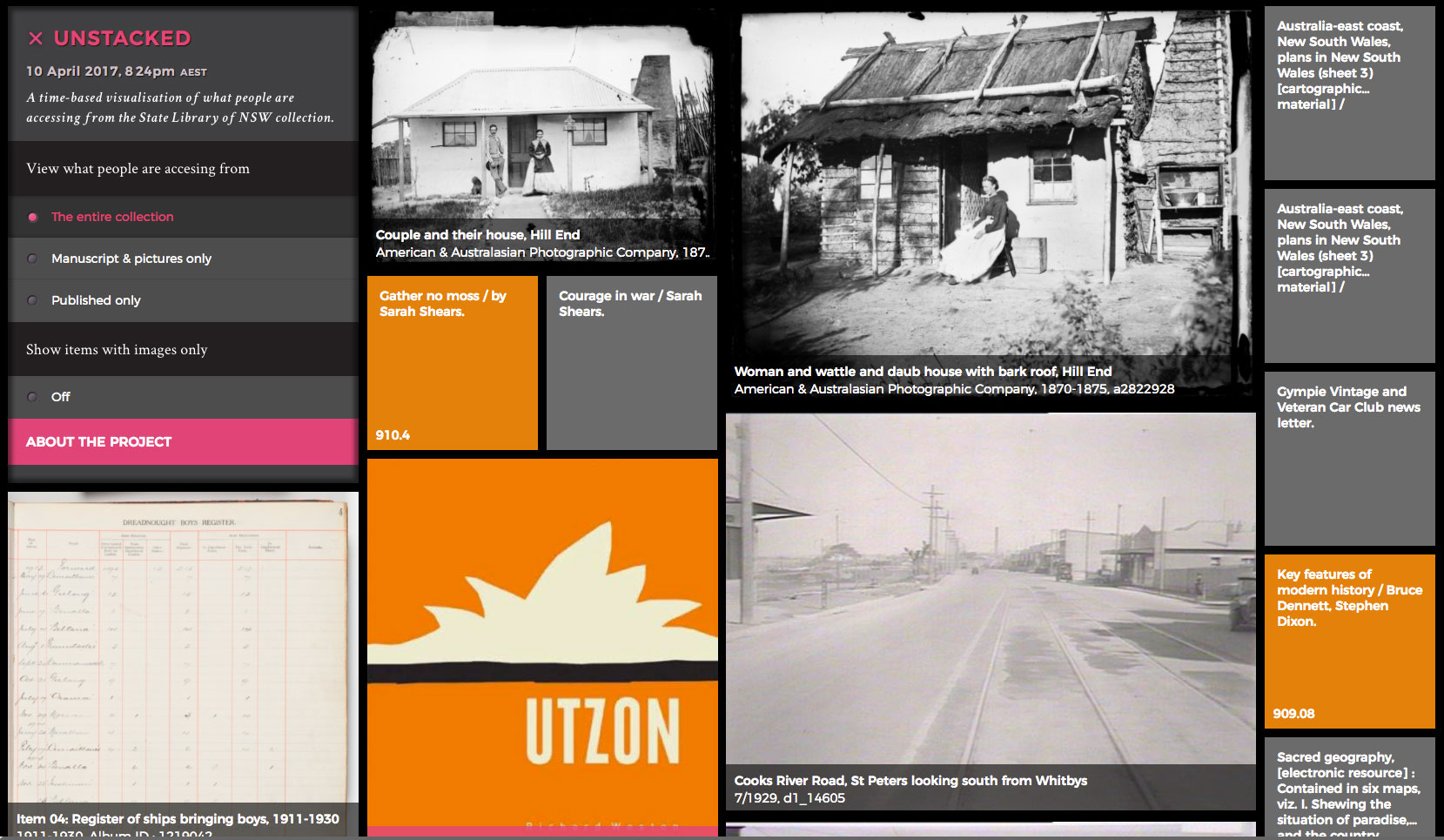
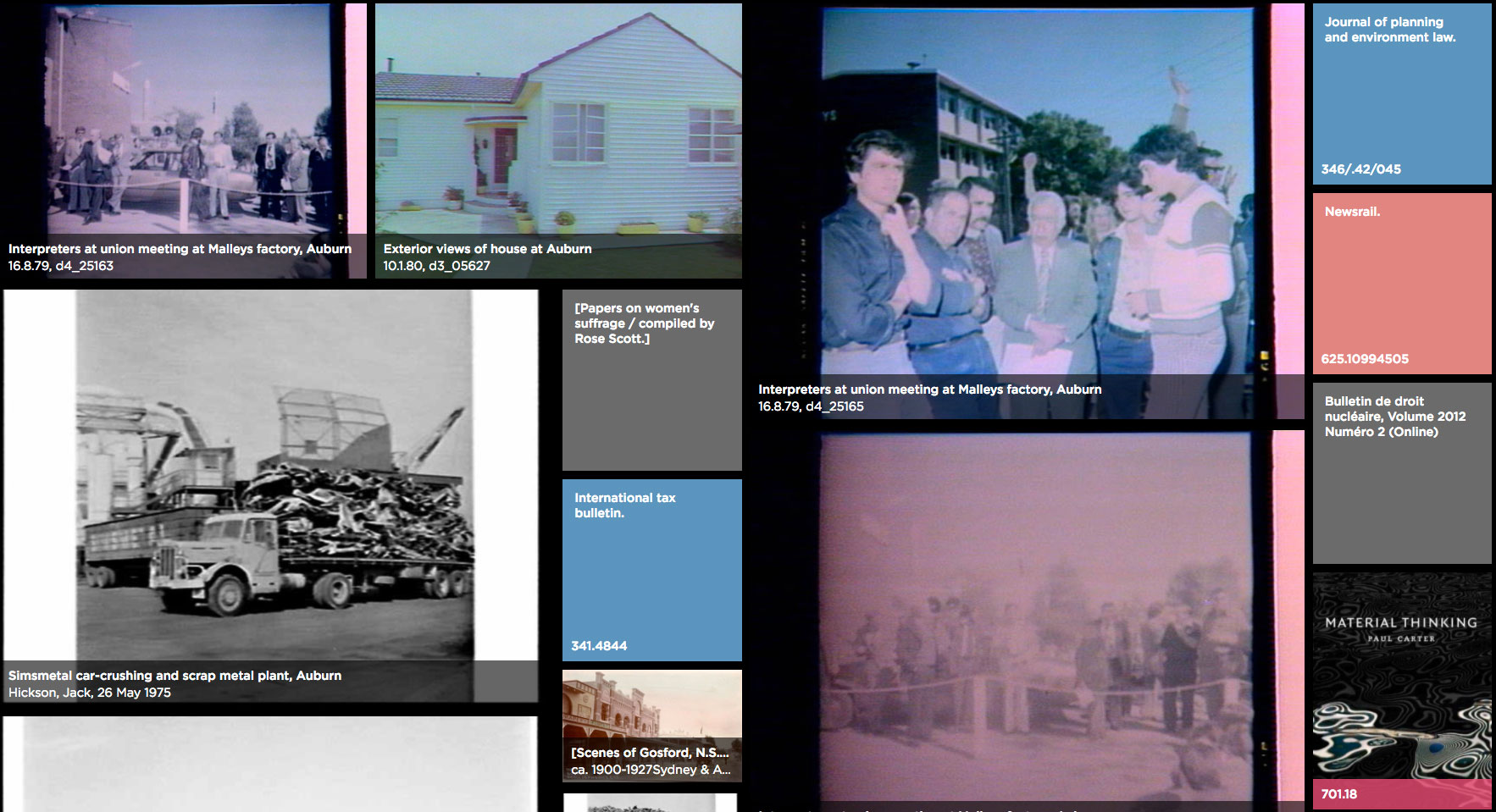
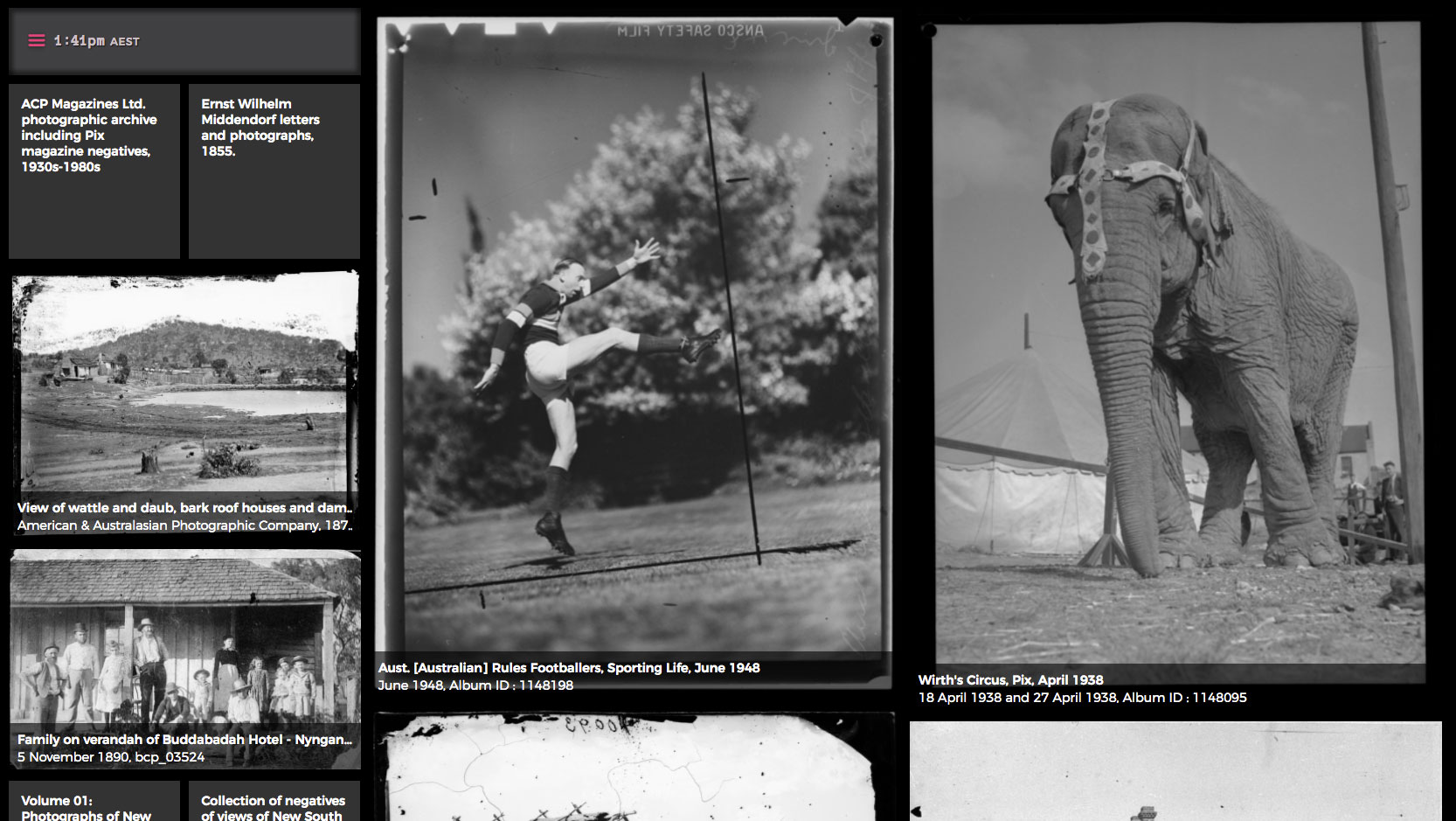
Citizen Curator
The library’s clientele have become accidental curators, who through their own research may inspire others to explore the collection. “I had no idea the State Library had things like that” and “I’m going to look that up too” have been some encouraging responses so far.
It will be interesting to see how the visualisation changes as people are inspired to research what others are looking at. It is likely that we will see repeated entries as people access the catalogue record of popular items showcased in the visualisation.
If people are aware that what they are researching will appear in Unstacked, we may even see impromptu performances from the public. It can also be used by library curators for live curations of the collection.
The Future
Unstacked adds value to the library and its visitors by constantly showcasing the collection in all its richness and diversity. We anticipate that it will play a part in increasing the number of visits to the library both virtual and physical, and that it inspires people to further research items that have piqued their interest. When displayed in a public space, the project provokes conversation. We will have a chance to see this more when it is launched at the end of the month and are keen for feedback and responses from a broader audience. If you’re reading this diary, we welcome your comments.
We are looking forward to flicking the switch to the live data feed when the time comes and to see the work in a form of public display within the State Library. Additionally we plan to finalise Unstacked: Microfiche Reader, which will enable exploration of the visualisation via an “enchanted”,digitally enhanced, and tactile microfiche reader.
It has been a great honour to be the inaugural fellows for the DX Lab and we would like to sincerely thank the State Library of NSW foundation, the DX Lab team and all those who gave their time and shared their invaluable knowledge with us to make this project happen.
You can view Unstacked here.
Previous blog posts on this fellowship are:
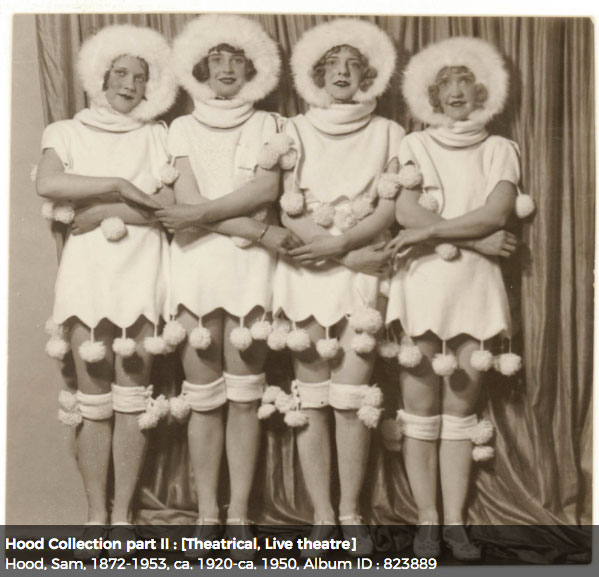


Comments
So are you planning to make the software available so other libraries can do this? This would be so cool in our university library.
Hi Karl, the code for Unstacked has been shared in our Github account. We would love to know if you use this. Thanks for the comment.
A wonderful display of why libraries’ in all their diversity are essential to our culture. Peeping over others’ shoulders is of course a delight, especially when searches are combined and the resulting mix is so mad! Occasional revelation is the bonus, which can begin a chase down the rabbit-hole…..
Love it.
Fantastic work, very contemporary yet easy to access and engages me to participate to go searching for items to uncover in the Stacks…. It also shows the strength of our anthropocentric background and history marrying with new Innovation and Technology! Congrats Elisa & Adam….